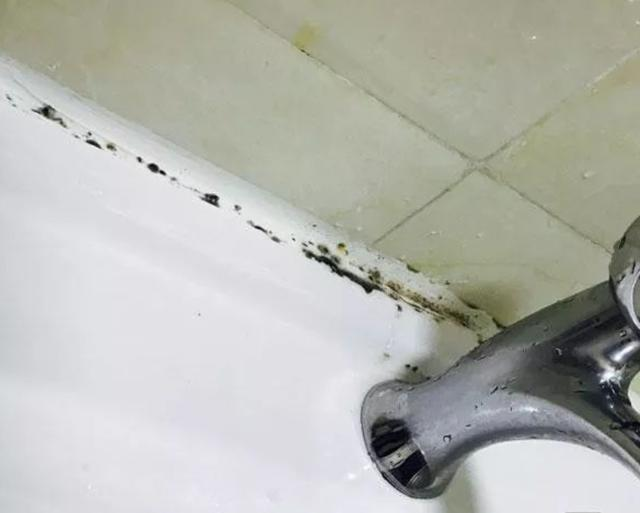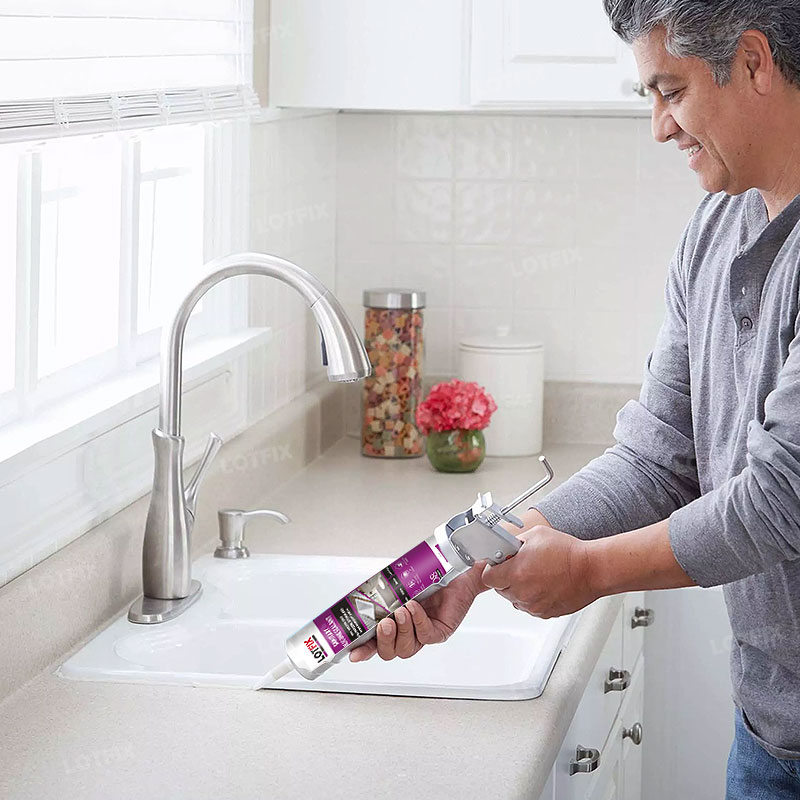If you've ever wondered whether using silicone sealant in the bathroom can lead to mold growth, you're not alone. Many homeowners have this concern, especially in areas like bathrooms that are constantly exposed to moisture. In this blog post, we'll explore the relationship between silicone sealant and mold, and provide you with some tips on how to prevent mold growth in your bathroom.

What is Silicone Sealant?
Silicone sealant is a type of adhesive that is commonly used in bathrooms to create a waterproof barrier between tiles, fixtures, and other surfaces. It is made from a synthetic rubber material that is resistant to water, heat, and mildew. Silicone sealant comes in a variety of colors and types, including clear, white, and colored options. It can be applied using a caulking gun or a sealant applicator, and it typically dries within 24 to 48 hours.
Types of Silicone Sealant on the Market:
There are several different types of silicone sealant available on the market, each with its own unique properties and benefits. Here are some of the most common types:
1、100% Silicone Sealant: This type of sealant is made entirely from silicone and is known for its excellent waterproofing and durability. It is resistant to mold, mildew, and UV rays, making it a popular choice for bathrooms and other areas that are exposed to moisture.
2、Hybrid Sealants: Hybrid sealants are a combination of silicone and other materials, such as polyurethane or acrylic. They offer a balance of performance and cost, and are often used in applications where a high level of flexibility is required.
3、Mold-Resistant Sealants: These sealants are specifically formulated to resist mold growth. They contain additives that inhibit the growth of mold and mildew, making them a great choice for bathrooms and other areas that are prone to moisture.
Does Silicone Sealant Cause Mold?
The short answer is no, silicone sealant does not directly cause mold. However, if the sealant is not applied correctly or if it is damaged, it can create conditions that are conducive to mold growth. Here are some factors that can contribute to mold growth on silicone sealant:
1、Moisture: Mold thrives in moist environments, and bathrooms are no exception. If water is allowed to accumulate on or around the silicone sealant, it can create a breeding ground for mold.
2、Poor Ventilation: If the bathroom does not have proper ventilation, moisture can build up in the air and condense on surfaces, including the silicone sealant. This can lead to mold growth over time.
3、Damaged Sealant: If the silicone sealant is cracked, peeling, or otherwise damaged, it can allow water to seep through and create a moist environment for mold to grow.
4、Lack of Cleaning: If the silicone sealant is not cleaned regularly, dirt, soap scum, and other organic matter can build up on the surface, providing a food source for mold.
How to Prevent Mold Growth on Silicone Sealant?
While silicone sealant does not directly cause mold, there are several steps you can take to prevent mold growth in your bathroom. Here are some tips:
1、Choose the Right Sealant: Select a high-quality silicone sealant that is specifically designed for use in bathrooms. Look for a sealant that is mold-resistant and has good adhesion properties.
2、Apply the Sealant Correctly: Follow the manufacturer's instructions carefully when applying the silicone sealant. Make sure the surface is clean, dry, and free of any debris before applying the sealant. Use a caulking gun or sealant applicator to apply the sealant in a smooth, even bead.
3、Maintain Proper Ventilation: Make sure your bathroom has proper ventilation to reduce moisture buildup. Use an exhaust fan or open a window when showering or bathing to help remove moisture from the air.
4、Keep the Sealant Clean: Regularly clean the silicone sealant to remove dirt, soap scum, and other organic matter. Use a mild detergent and a soft cloth or sponge to clean the sealant. Avoid using harsh chemicals or abrasive cleaners, as these can damage the sealant.
5、Inspect the Sealant Regularly: Check the silicone sealant regularly for any signs of damage or wear. If you notice any cracks, peeling, or other issues, repair or replace the sealant as soon as possible.
Conclusion
In conclusion, using silicone sealant in the bathroom does not directly cause mold. However, if the sealant is not applied correctly or if it is damaged, it can create conditions that are conducive to mold growth. By choosing the right sealant, applying it correctly, maintaining proper ventilation, keeping the sealant clean, and inspecting it regularly, you can help prevent mold growth in your bathroom and keep your silicone sealant looking and performing its best.

Product Recommendation
LOTFIX D8 Sanitary Silicone Sealantis an one-component acetoxy cure sanitary silicone sealant, it contains anti-fungal agent and specially designed for bathroom, kitchen and high humidity areas applications. Also it can be used for a range of general glazing sealing and provides an excellent adhesion and suitable for use on common non-porous building materials...

